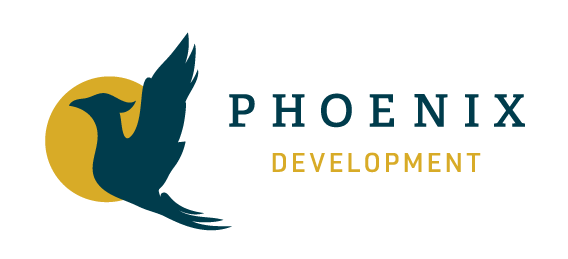Bottineau Housing Project
Bottineau Lofts—conversion of historic building to apartments
Bottineau Commons
1808 University Avenue,
Minneapolis, MN 55418Bottineau Lofts
1929 2nd Street NE,
Minneapolis, MN 55418Bottineau Townhomes
18XX 3rd Street NE,
Minneapolis, MN 55418
This award winning, three-part project is comprised of:
156 unit mixed-income and affordable rentals known as Bottineau Commons and Bottineau Lofts
26 for-sale townhomes known as Bottineau Townhomes
Partner Organizations:
East Side Neighborhood Services (ESNS)
Bottineau Neighborhood Association
Minnesota Housing Finance Agency (MHFA)
City of Minneapolis
National Park Service
Hennepin County HRA
Funding Sources:
Tax exempt bond
Section 42 tax credits
Bond credit enhancement provided by HUD
Tax increment financing provided by the City of Minneapolis
Federal Historic Tax Credits approved by National Park Service for the renovation of historic property
Funding from the Challenge Fund Program provided by MHFA
Funding awarded by MHFA to write down the cost for 14 of the 26 townhomes, allowing these units to be sold affordibly to low and median income families
In 2000, a concerned resident of the Bottineau neighborhood contacted Loren Brueggemann. A nearby abandoned grocery store with an expansive parking lot had become a nuisance and an eyesore. Such a large property would provide excellent redevelopment opportunities, and Loren, in partnership with Sherman Associates, Inc., jumped at the chance to help the neighborhood both by eliminating a bothersome vacant property, as well as by offering new housing options to further the growth of the community.
Bottineau Lofts Townhomes
Loren began the project by approaching Bill Laden, Executive Director of East Side Neighborhood Services (ESNS), for assistance in understanding the needs of the neighborhood. At the time, ESNS was located in a historic building on 2nd Street NE. Established in 1915 as a settlement house, this historic property initially provided housing for recent immigrants, helping to ease
their transition into a new country at a time when few resources existed for foreigners. Over the years it had been converted into office space, and through the work of ESNS continued to serve the community.
As luck would have it, ESNS was outgrowing its current location and searching for someone to take over its historic building. Loren and Bill quickly realized the potential of this opportunity, and worked together to reach an agreement. Upon completion of their new facility, ESNS vacated the settlement house while Loren’s team began developing plans to convert it into 33 affordable rental units, as well as four brand new, affordable town homes over the preexisting parking lot. This plan was approved by the National Park Service, and much work went into preserving the historic character and integrity of the building.
Bottineau Commons
The redevelopment of the historic settlement house, combined new construction over the vacant grocery store property, allowed the Bottineau Housing Project to add 156 mixed-income and affordable rental units to the Bottineau Neighborhood, as well as 26 for-sale town homes. With the help of additional financing from the Minnesota Housing Finance Agency (MHFA), 14 of the for-sale town homes were able to be sold at a significantly reduced, affordable rate to qualifying families.
The Bottineau Housing Project, with the successful conversion of two large properties into rental housing, plus the development of several new town homes, helped the Bottineau community to grow significantly. By offering rental and for-sale units at a mixed-income level, the Bottineau Housing Project also helped integrate a diverse population into what was formerly a primarily Caucasian neighborhood. Many Somali families took residence in the Bottineau Project, and quickly became active members of the community. In a sense, the historic settlement house, though this redevelopment, has also gone back to its roots, helping immigrants to effectively become a part of a new community.
The Bottineau Housing Project was awarded Best in Real Estate, Multi Family Project by the 2002 Business Journal and was completed in partnership with Sherman Associates, Inc.
